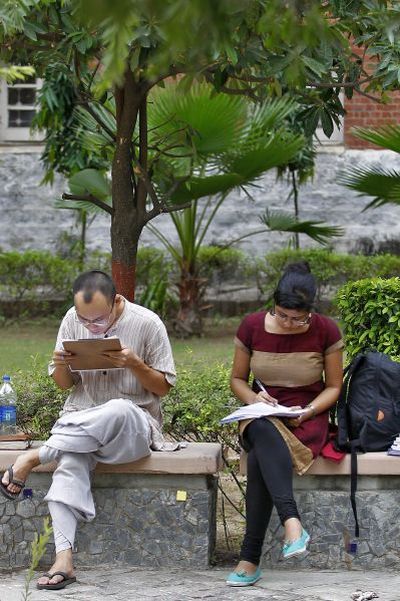 | « Back to article | Print this article |
Who backs these universities?
How on earth do they acquire such large tracts of land?
Who invests money in them and how much and from where?
Do these raise funds from banks and financial institutions -- the normal way we are used to? Anjuli Bhargava raises some pertinent questions. Read on...
 Twenty-eight new private universities have appeared in the University Grant Commission's list of notified private universities in 2014 and 2015.
Twenty-eight new private universities have appeared in the University Grant Commission's list of notified private universities in 2014 and 2015.
This state-wise list of universities (updated till April 2015) has 207 universities on it now, the highest concentration being in Rajasthan.
Among the new ones, Punjab and Haryana (the state oddly has only 17 private universities, although living here I was under the impression that a new one was springing up every few weeks) seem to have the largest number notified in the last two years.
I still can't quite understand why, how and at whose behest some of these have come up.
The questions that arise are mind-boggling.
Who backs these universities?
How on earth do they acquire such large tracts of land?
Who invests money in them and how much and from where?
Do these raise funds from banks and financial institutions -- the normal way we are used to?
Which gifted architect creates some of these monstrosities?
Visit one of new ones around and you will know what I mean.
Is there no limit to how much reflective glass and chrome is permitted to be used?
Are there any real people in there?
Who gives the requisite clearances?
What kind of academic rigour or standards do they promise? And what do they deliver? What the hell is going on?
There's a long list of strange names out there in 2014 and 2015 alone.
Glocal university (somewhere between global and local presumably), Spicer Adventist, Al-Falah University, Rai Technology, Rama University, Madhav University, Sant Baba Bhag Singh University, Rayat Bahra University -- the list is never ending. I can go on and on.
But if that's bad news, there's some good news as well.
What stands out is that of late, along with the dubious, a large number of reasonably well-known and some somewhat reputed corporate houses are entering this business.
Just like in the United States, Indian businesses and businessmen seem to have cottoned on to the view that this is one of the best legacies to leave behind and that this is perhaps the single biggest contribution they can make.
So we now have the Jaypee University, OP Jindal University, Munjal University, Shiv Nadar University and GD Goenka University along with Ansal, Ambani and Jindal (law) universities. Of course, we also have K R Managalam, SRM University (set up by the SRM group that was in the news for a tax raid recently), Rai University and Pacific Medical.
There are a few points I'd like to make here and dole out some unsolicited advice to anyone willing to listen.
In general, in a country like ours, I would agree to the principle of the more, the merrier. But in India, the shortage is of high quality higher education institutions.
So if the Jaypees, Munjals and Shiv Nadars want to stand out in the crowd and don't want to be clubbed with Amity, Sharda and Lovely, they have their task cut out.
They may be well intended but intent alone does not a university make.
Then, like in the past, there are bound to be plenty of not-so-well-intentioned institutes out there.
Without going into specifics, I have a piece of advice for them at the cost of upsetting my employers.
Newspapers are full of advertisements -- virtually on a daily basis -- and the size of the advertisement is usually directly proportional to the paucity of students.
If these new universities spent as much on their faculty as they do on their advertising, they would do a whole lot better than they are at present.
Slash the advertising budget and spend on hiring good faculty and the students you desperately seek will flow in.
Even those that are just a money-making racket would do better with less advertising and more focus on staff and faculty.
In general, students and parents should be wary of the biggest advertisers. The names you read every day are the names to beware of.
And as usual, we need some help from the somnolent authorities -- ideally at the centre.
Wake up, sleepy heads. Sift through this list and identify which of these are providing, if not high then at least some kind of quality.
Junk rating for the junk. Five stars for real stars.
Just adding endless bizarre names to the list is silly.
It adds to the confusion out there and allows institutes to make money for a few years before the authorities catch up with them.
Lead image used for representational purposes only. Credit: Anindito Mukherjee/Reuters